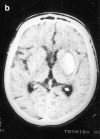Why do children have chronic abdominal pain, and what happens to them when they grow up? Population based cohort study
- PMID: 9552994
- PMCID: PMC28520
- DOI: 10.1136/bmj.316.7139.1196
Why do children have chronic abdominal pain, and what happens to them when they grow up? Population based cohort study
Erratum in
- BMJ. 2003 Aug 30;327(7413):500
Abstract
Objective: To test the hypotheses that children with abdominal pain have anxious parents and come from families with high rates of physical illness and that they grow up to suffer from high rates of medically unexplained symptoms and psychiatric disorders.
Design: Population based birth cohort study.
Setting: General population.
Subjects: Participants in the Medical Research Council (MRC) national survey of health and development, a population based birth cohort study established in 1946.
Main outcome measures: Abdominal pain present throughout childhood in the absence of defined organic disease, and measures of physical symptoms and psychiatric disorder at age 36 years.
Results: There were high rates of complaints about physical health among the parents of children with persistent abdominal pain, and the mothers had higher neuroticism scores. Children with persistent abdominal pain were more likely to suffer from psychiatric disorders in adulthood (odds ratio 2.72 (95% confidence interval 1.65 to 4.49)) but were not especially prone to physical symptoms once psychiatric disorder was controlled for (odds ratio 1. 39 (0.83 to 2.36)).
Conclusions: Persistent abdominal pain is associated with poor health and emotional disorder in the parents. Children with abdominal pain do not necessarily continue to experience physical symptoms into adulthood but are at increased risk of adult psychiatric disorders.
Figures
Comment in
-
Long term follow up of children with recurrent abdominal pain. Definition of recurrent abdominal pain was not applied.BMJ. 1998 Sep 5;317(7159):682-3. doi: 10.1136/bmj.317.7159.682a. BMJ. 1998. PMID: 9728012 Free PMC article. No abstract available.
References
-
- Goodman JE, McGrath PJ. The epidemiology of pain in children and adolescents: a review. Pain. 1991;46:247–264. - PubMed
-
- Campo JV, Fritsch SL. Somatization in children and adolescents. J Am Acad Child Adol Psychiatry. 1994;33:1223–1235. - PubMed
-
- Scharff L. Recurrent abdominal pain in children: a review of psychological factors and treatment. Clin Psychol Rev. 1997;17:145–166. - PubMed
-
- Woodbury MM. Recurrent abdominal pain in child patients seen at a pediatric gastroenterology clinic. Psychosomatics. 1993;34:485–493. - PubMed
Publication types
MeSH terms
LinkOut - more resources
Full Text Sources
Medical


